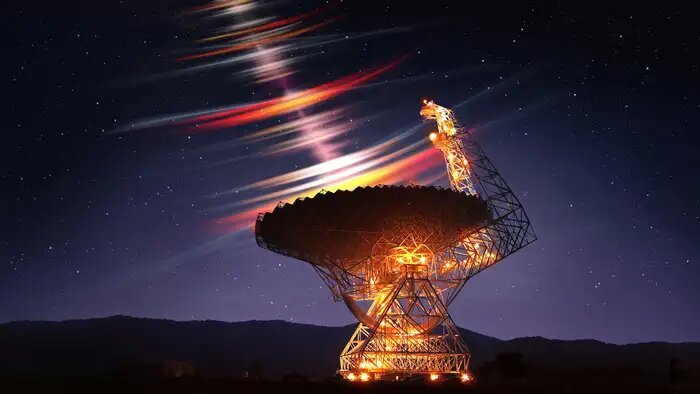Dutch astronomers search through telescope archives; recently discovering a burst event that lasted for just a few microseconds

An international team of researchers led by Dutch Ph.D. candidate Mark Snelders has discovered radio pulses from the distant universe that last only millionths of a second. The ultrafast bursts are a new kind of fast radio bursts, which are unpredictable flashes of radio waves far beyond our Milky Way, possibly caused by magnetic neutron stars. The discovery of these ultrafast bursts could help researchers create a map of the space between stars and galaxies to better understand how galaxies are being fed by the surrounding gas.
Researchers at the University of Amsterdam and ASTRON discovered microsecond radio bursts after meticulously examining archival data from a known millisecond source. The origin of these ultra-fast bursts remains unclear, but they may be caused by magnetic neutron stars, also known as magnetars. The first bursts were discovered in 2007 and most of them last longer than a thousandth of a second, emitting as much energy as our sun generates in a day.
In 2022, Mark Snelders, a Ph.D. candidate at ASTRON and the University of Amsterdam, led a team that hypothesized the existence of bursts that would last only millionths of a second. The researchers used a public archive from the Breakthrough Listen project, which searches for extraterrestrial life, to analyze five hours of data from the known repeating fast radio burst FRB 20121102A, located three billion light years away toward the constellation of Auriga.
The researchers used software filters and machine learning to analyze half a million individual images per second, discovering eight ultra-fast bursts that lasted only ten-millionths of a second or less. While researchers expect to find more such sources, some data files may not be detailed enough to analyze in such detail.
Ultimately, the researchers hope to use the bursts to create a map of the space between stars and galaxies to better understand how galaxies are fed by the surrounding gas.

 How to resolve AdBlock issue?
How to resolve AdBlock issue?